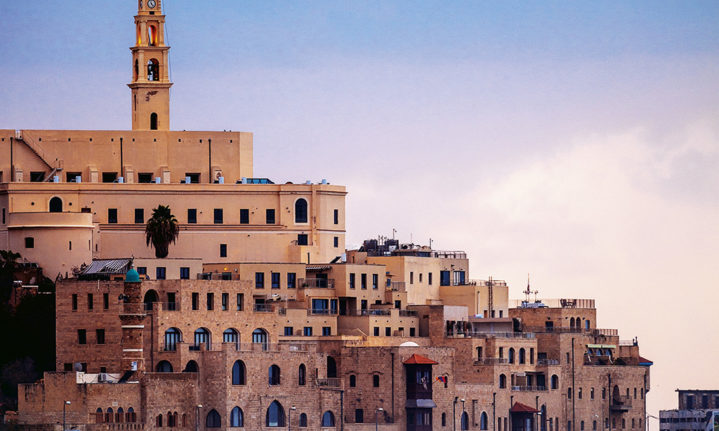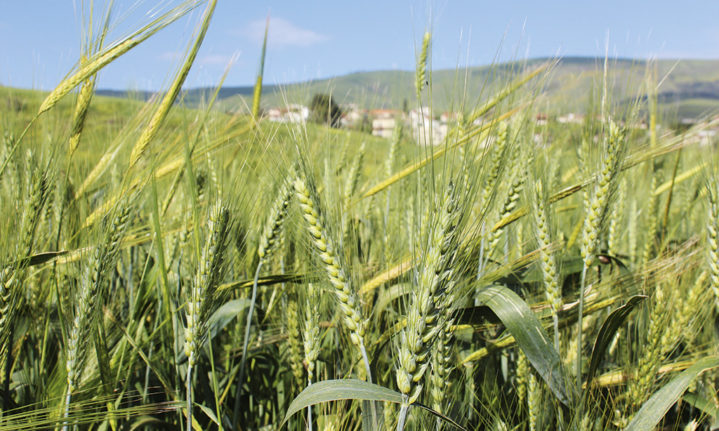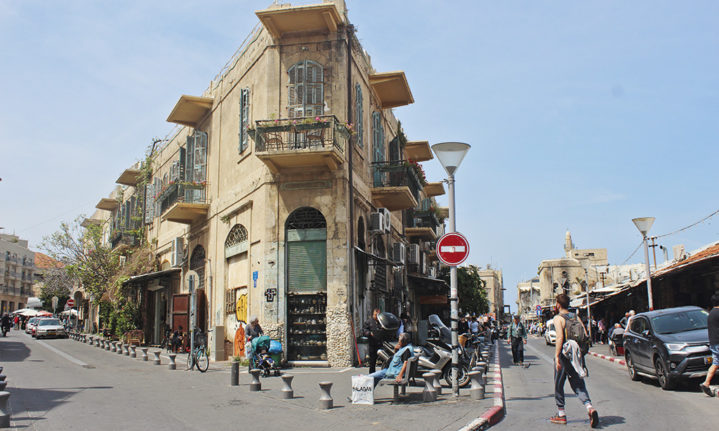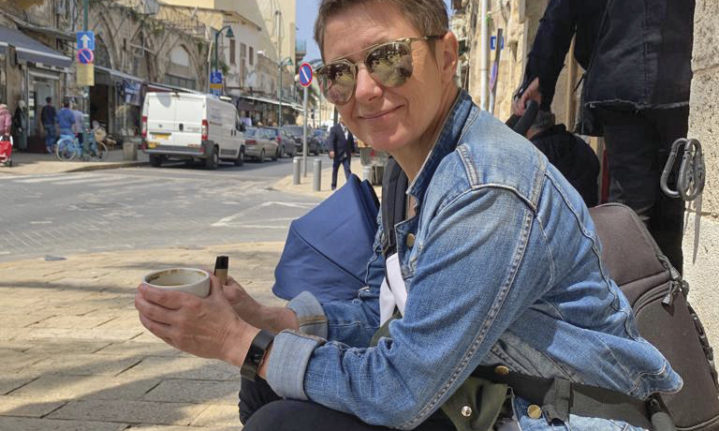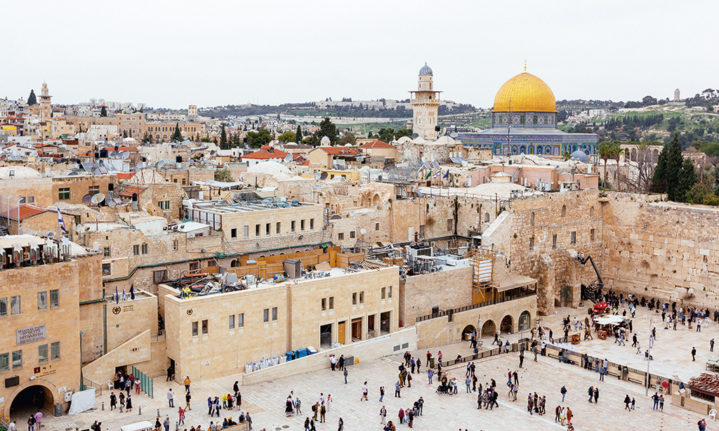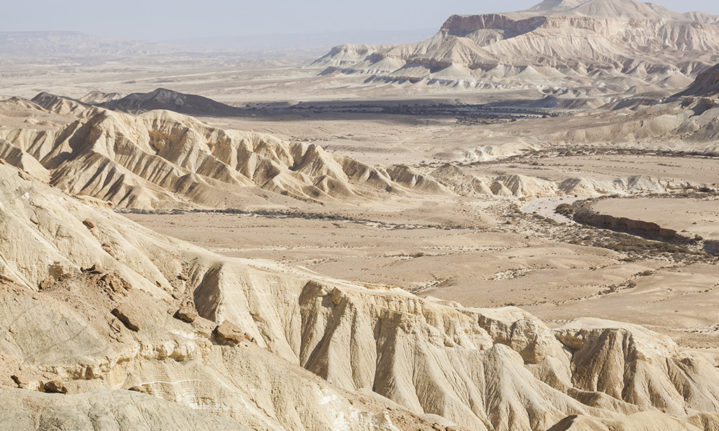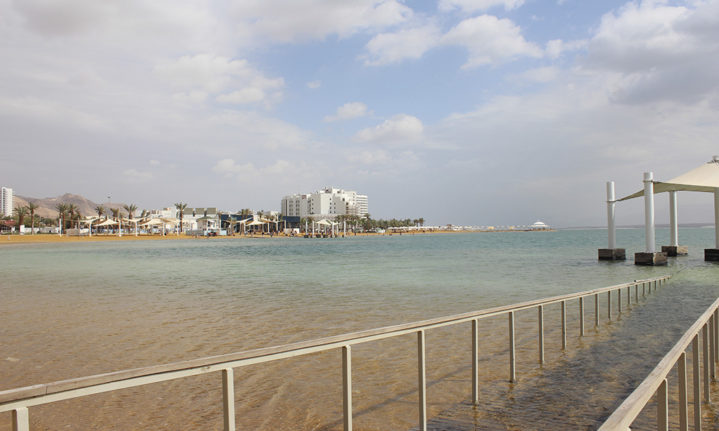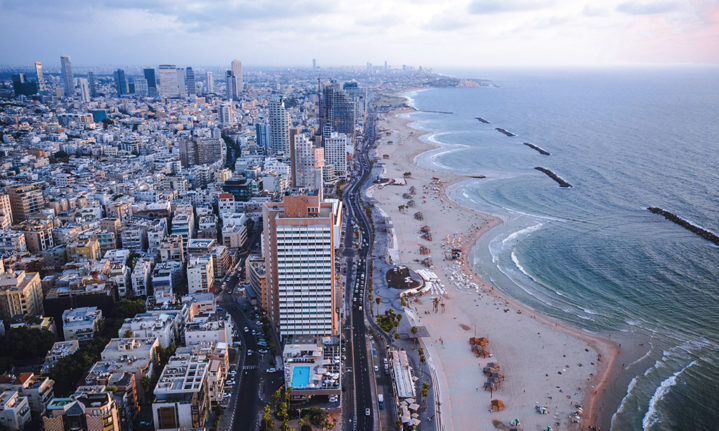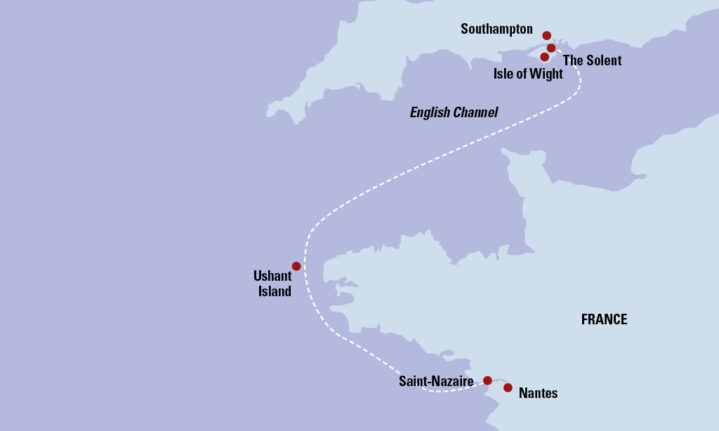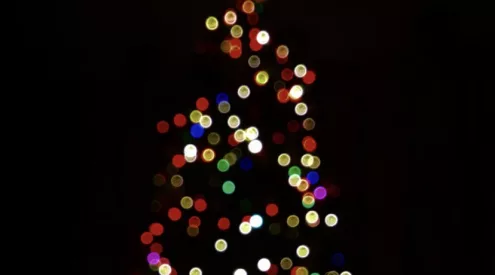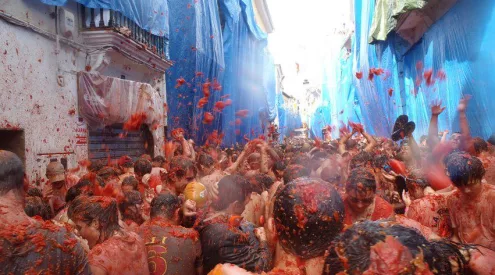The nation of Israel is a place of political difficulty and contention, but it’s also a world-leader in terms of water management and agriculture. Karin Schimke combined a duty visit with a holiday that covered the country by threading her way through Israel’s various bodies of water.
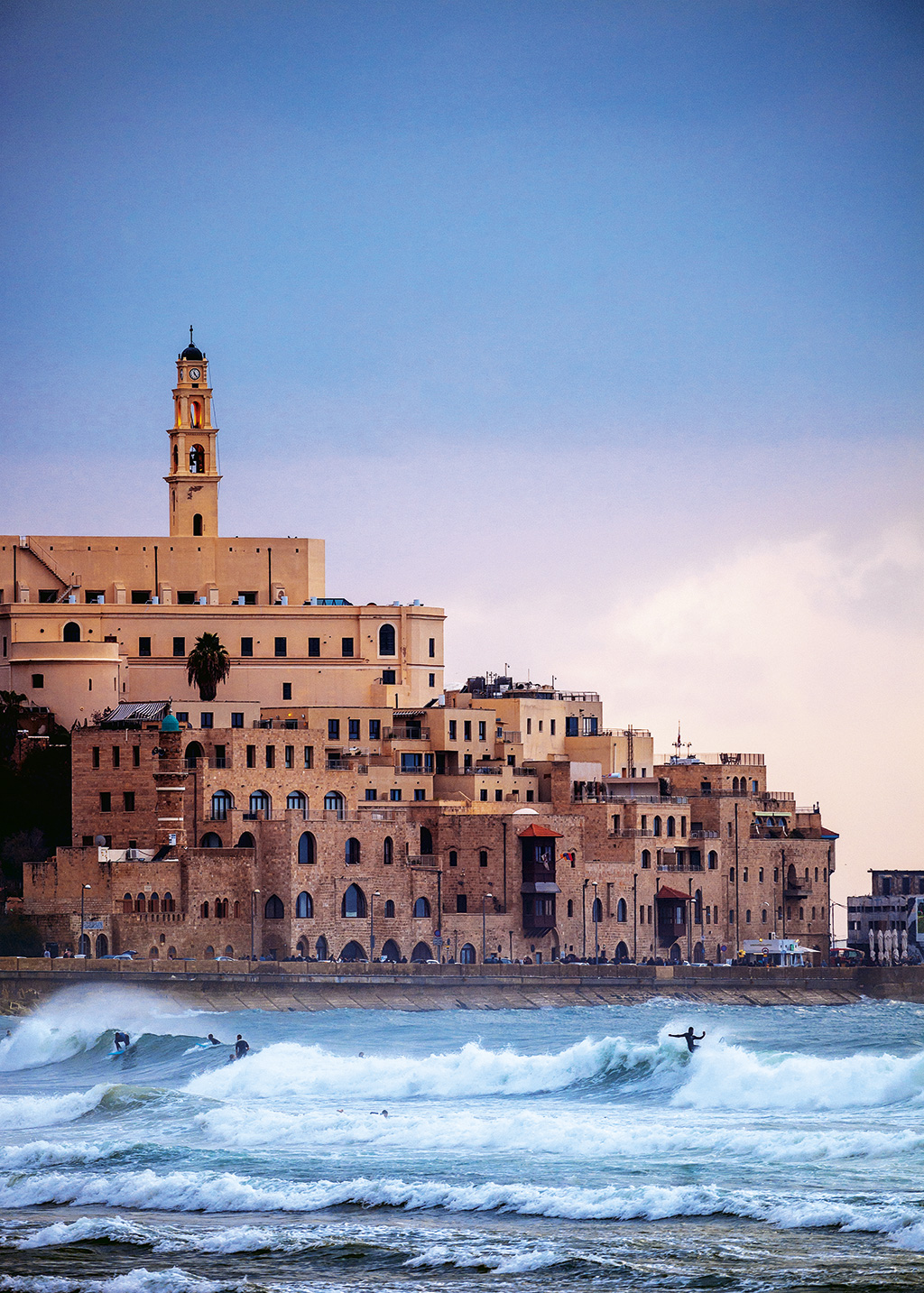
‘And one more thing,’ said the teenager giving us a briefing before handing us over to our snorkelling guide. ‘Don’t smile when you see a dolphin.’ We were about to swim with dolphins at the eponymously named Dolphin Reef on the Gulf of Eilat, in the Red Sea, the southernmost point of the little shard that is Israel.
Seeing dolphins was so pleasing, the young man explained, that people often smiled broadly, breaching the tight clasp around the mouthpiece of their snorkels and inadvertently sucking in water. We were also instructed not to pet the dolphins. My partner and I waded into the warm water at the lake-like shore holding hands as we’d been told to and sunk into the benign blue of the Red Sea, losing ourselves in the rich other-worldly serenity of the underwater world. Dolphins flitted by every so often, providing a little frisson each time, but never pausing long enough for us to smile at or pet them.
The rest of the day, the last of a two-week round trip of Israel, was spent soaking up the early spring sunshine, reading and paddling about in the mild waters. We had swum in the Med, the Dead and the Red, and had dipped our toes in the River Jordan and the Sea of Galilee. And just to get a proper sense of how strangely diverse the topography of Israel was, we’d hiked through the Ein Avdat canyon in the Negev Desert.There aren’t many countries you could see the length and breadth of in 14 days without paying heavy stress duties, but at just under 500 kilometres north to south and about 135 kilometres east to west – and with an excellent public transport and roads system – Israel is a doddle.
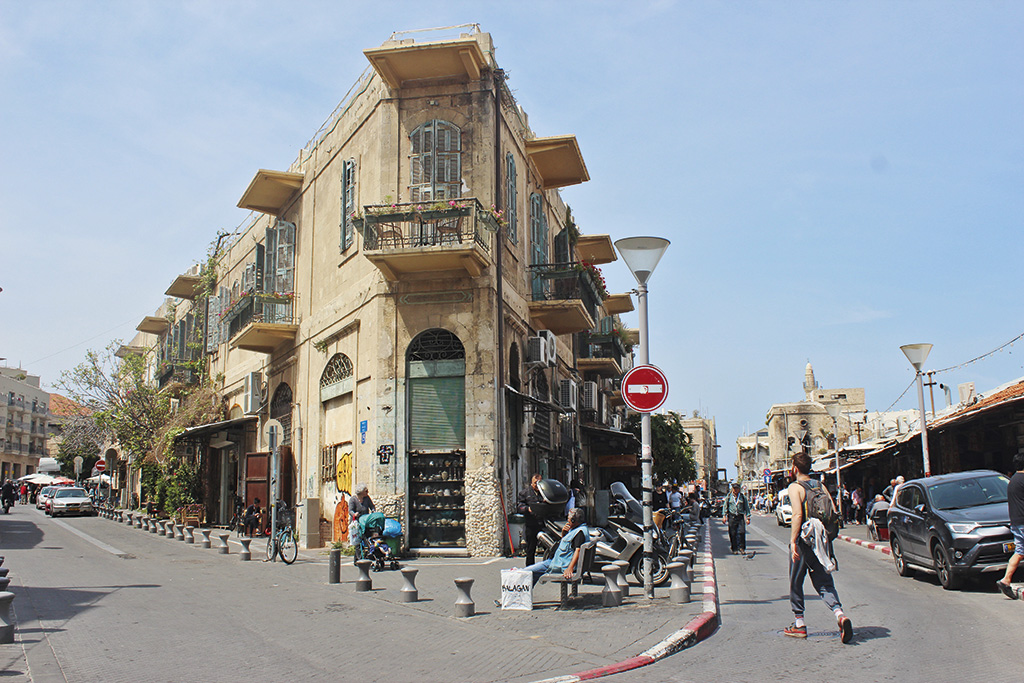
Don’t rush Jaffa. Take a day to meander its streets. This is the best place for buying clothes and jewellery from young designers.
With public Wi-Fi almost ubiquitous in Israel, and the Moovit app to plan our routes, we travelled from cities to towns to villages in trains and buses, and used the ancient method of perambulation for the in-between bits. We had small wheelie suitcases – not backpacks– but never felt burdened, vulnerable, flustered or in any way regretful about our chosen mode of travel. With most public transport having Wi-Fi, we could also arrange meet-ups with hosts, consult maps and make spontaneous last-minute bookings.
We started in Tel Aviv, a shimmering, dense, noisy jangle of a city. The skyline bristles with buildings locked in a race for the clouds. A tenfold population swell in 80 years means housing increasingly happens vertically rather than horizontally. Between the city’s high- rises, the squat white 1930s Bauhaus-style buildings Tel Aviv is famous for cling on in glorious neglect.
Over the course of our holiday, we stayed in two of the latter: the first Airbnb just off the wide Rothschild Boulevard, near Habima Square; the second tucked into the back of a building near the strange architectural confection that is the Dizengoff shopping centre. From these two spots, we explored the city on foot, zigzagging the streets to absorb an overall sense of the architecture and art. Our own little made-up literary tour took in the Tel Aviv Museum of Arts and its ancillary Helena Rubinstein Pavilion, both of which carry engaging and provocative exhibitions throughout the year, and the pokey, book-lined house of David Ben-Gurion, the primary founder of the State of Israel, on the boulevard named for him.
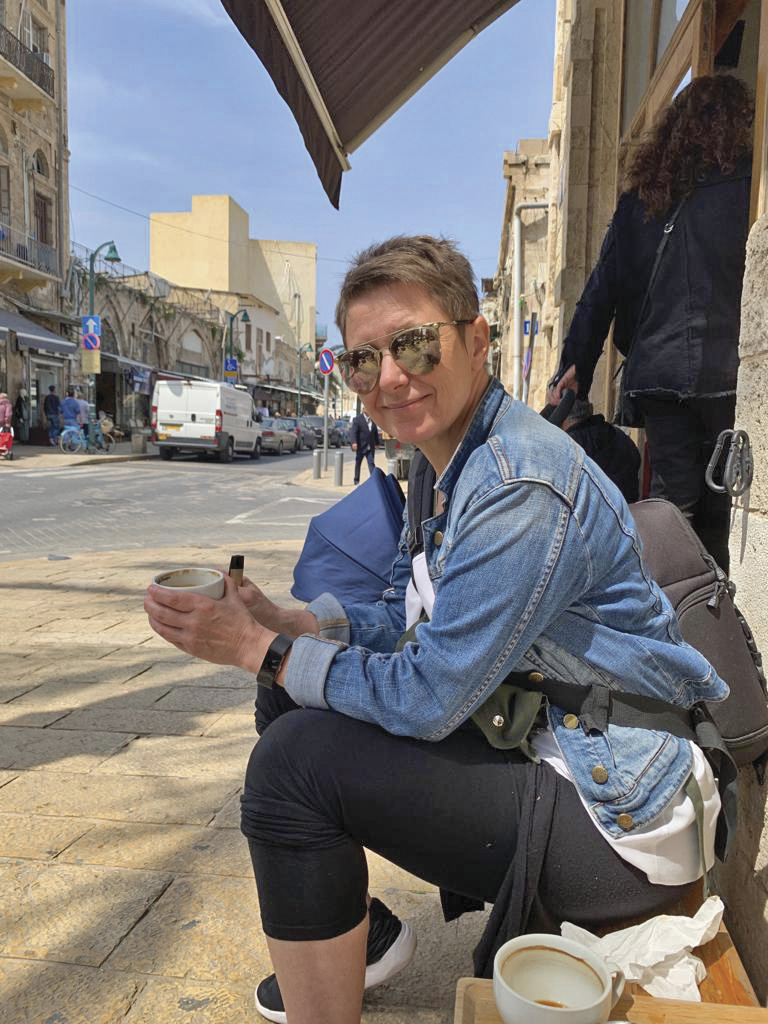
Karin Schimke soaking up the atmosphere in the oldest part of Tel Aviv, where elderly men play chess and smoke outside junk shops, while youngsters zip past on scooters clutching laptops.
We had tickets to the final show of the season of the Batsheva Dance Company which has become world famous under the leadership of Ohad Naharin. Walking back to the bus station accompanied by the scent of orange blossoms, we beamed with vicarious parental pride to discover that the dancer we couldn’t take our eyes off in a show that had no single star was the South African Londiwe Khoza.
Walking along the extended seaside promenade, all the way from the picturesque Jaffa Port in the south to the late-Brutalist Hilton Hotel in the north, we paused on coppery beaches to take dips in the Mediterranean, which licks at the shore of a land that has been contested backwards and forwards for centuries.
Walking isn’t just the most comprehensive and pleasant way to get to know this surprisingly hip city, but also the wisest if you’re grazing along the way. Israel’s fresh produce, a testament to the country’s reputation as a world leader in irrigation and water management (despite 60 per cent of its surface being desert) is a tourist attraction all on its own.
Cheerful juice stalls with piles of fruit and vegetables are as ubiquitous as the cafes with their enticing pastries. Tel Aviv is also considered one of the most vegan-friendly cities in the world. A visit to a produce market, like the fancy Sarona Market or the more authentic Shuk HaCarmel, will keep your fridge full if you’re self-catering.
Israel’s standard fare of pitas with hummus and a chopped cucumber and tomato salad accounted for a fair share of our daily nourishment, though. Add the ice creams, and I came home two kilograms heavier in spite of all that enthusiastic tramping about. It’s hard to explain the depth of the crush I developed on Tel Aviv, a city I never expected to like – one I even, to be honest, had some resistance to because of my wariness about the dangers of rampant nationalism.
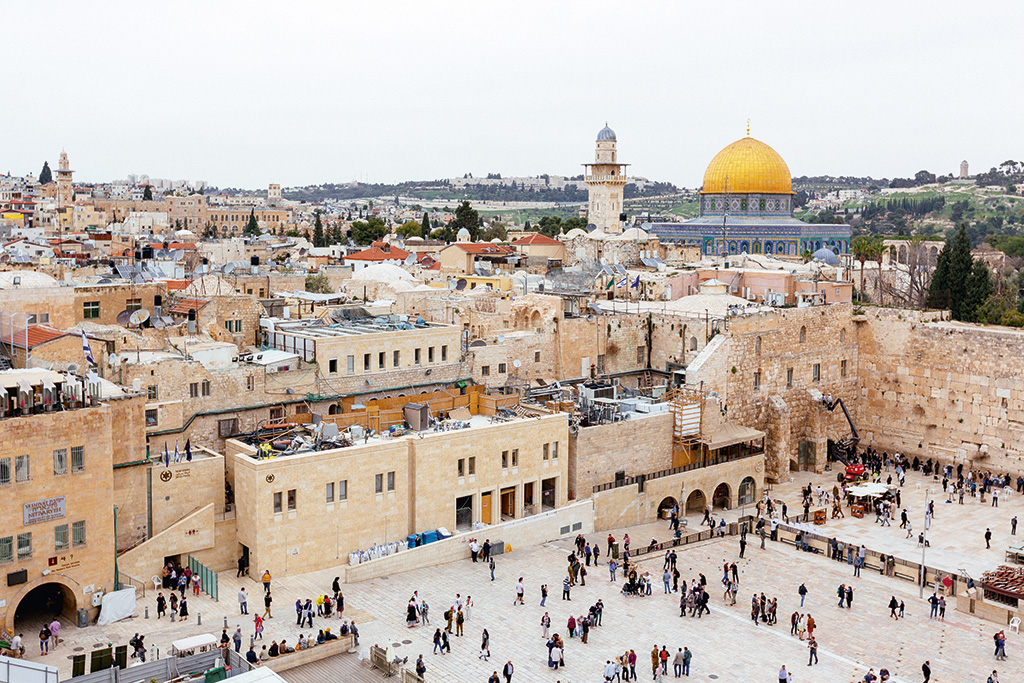
The Old City of Jerusalem is roughly divided into Jewish, Muslim, Armenian and Christian sections. The Western Wall at the Temple Mount is a holy site where Jews go to pray.
From Tel Aviv it’s a short train ride south to the immigrant city of Be’er Sheva and then a bus trip to miniscule Midreshet Ben-Gurion in the Negev Desert, a place of geological phantasmagoria and a destination for travellers with a bent for adventure. If we had journeyed to this northern lip of the Ein Avdat only to see the sunset, it would have been worth it for the white and beige canyons and dunes rippling off in the benign peach light as far as the eye could see.
It looked like a deserted planet in an episode of Star Trek. The placid cerulean pools of brackish water we came across during a two-hour hike through the bottom of the canyon the next day added to the sensation of having been dropped onto a movie set or into the pattern on a Ming vase.
The old walled city, which can be viewed from the incredible vistas provided by the YMCA Tower, is a chunk of 3 000-year old history overlapping archaeology, religion and architecture that could surely leave only the deeply cynical unimpressed. The crazy sense of this country’s contested past is made manifest in the ancient cobbles, hovels, market stalls, churches, mosques and synagogues.
After Jerusalem, we headed for the Sea of Galilee in the north, where Syria lies just over the Golan Heights. This freshwater lake is popular with religious and archaeological tourists. The city of Tiberias, a ramshackle scab on its western shore, has several beaches in its vicinity, but signs forbidding swimming out of season – and litter – put us off.
Recent rains after a drought had pushed the water level up and brought rubbish in which was bobbing around the muddy shore, igniting little pangs of disappointment that we couldn’t see the place at the point when Jesus was said to have walked on Kinneret’s (Sea of Galilee in Hebrew) choppy waters. We headed for the opposite shore and approached the water through a well-known kibbutz called En Gev. Tiberias is prettier from across the water.
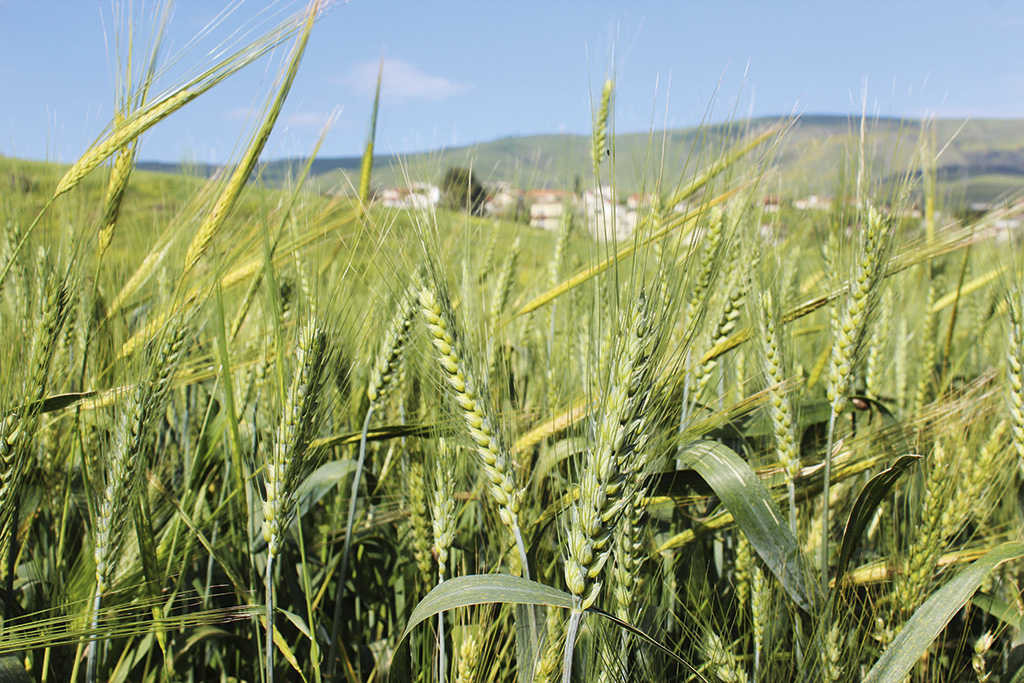
The Jordan River flows through the Jordan Valley which has been an agricultural paradise for thousands of years.
We stayed in the village of Menahemia, surrounded by yellow-green wheat fields, and from there walked down to the banks of the 250-kilometre-long River Jordan, which flows from the north down to the Dead Sea. Due to its biblical significance – it’s mentioned more than 180 times in the Holy Book – I’d expected to be more impressed.
We shivered our way into the sluggish shallows from the grassy bank with its tall, sunshine-yellow wild flowers and then walked home fast for a hot drink.
The next day we took a long, relaxing bus journey to the Dead Sea. Or the Dead Seas, since evaporation has caused the inland lake to split in two.
Sinkholes at Ein Gedi Kibbutz have killed date orchards, palm trees and tourism, so we drove on to the southern, smaller sea. Mount Masada was on the way, but water, not hilltop fortifications, was our focus. So we got off the bus instead at Ein Bokek to bob in the salty turquoise water there. It felt thick and oily, warm and untroubled. Cosy almost. I could have spent an entire day wobbling on its surface. But we only had a few hours.
We got back on the bus with our now silky, salty skins, and headed for our final destination of Eilat. After dropping off our bags, we wandered down to the shore, bought ice cream so expensive I could have wept for not having first checked the tourist-trap pricing on the board, and then wandered along the promenade.
The next day we would swim with the dolphins. As we stood licking our pathetically average-tasting ice creams (Tel Aviv’s food standards have not trickled this far south, it seems) and gazed out at the Red Sea, my partner, whose sense of geography is of the advanced sort, pointed out that we could see four Middle Eastern countries.
On our left, Aqaba – Jordan’s only coastal city – glinted in the setting sun. Opposite us, the northernmost part of Saudi Arabia’s western coastline formed one side of the entry pincer of the Gulf of Aqaba, while Egypt stretched away from us on the right. And we were standing in Israel, the little heart more or less in the middle of the Middle East. A place that had unexpectedly charmed me.
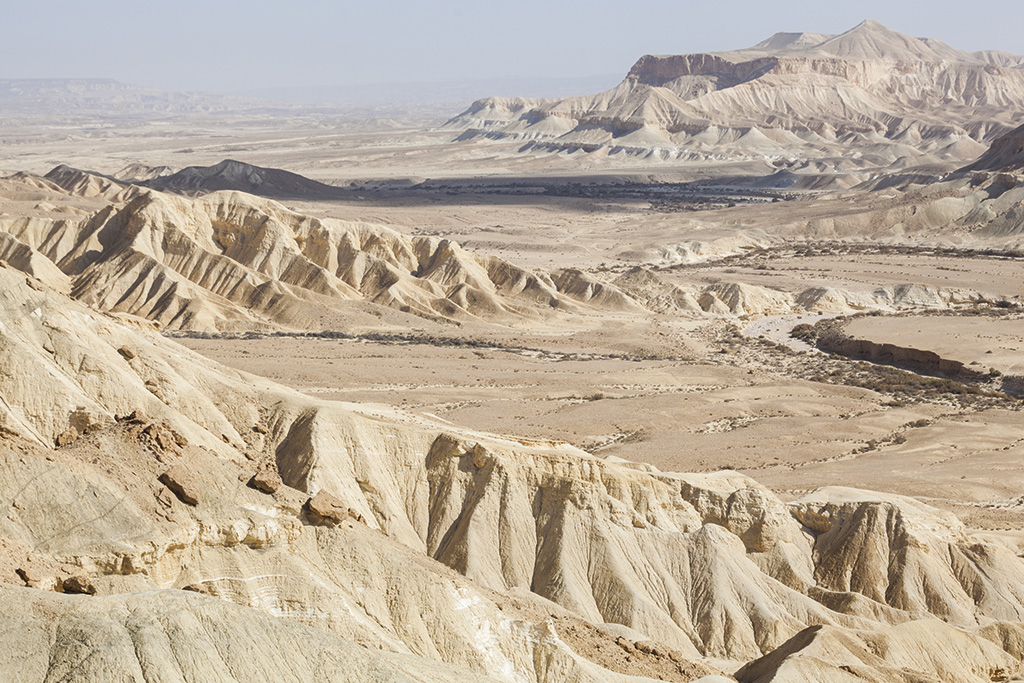
The Negev is a place of stark and unusual beauty and it’s a favourite destination for adventure tourists.
Israel in Context
As you fly into Tel Aviv, you see the wall that separates Israel from Gaza – a reminder that you’re about to holiday in a political hot zone. Although conflicts flare up sporadically, buildings have bomb shelters and armed soldiers on the streets are ever-present, there are few outward signs that Israel has strained relations with its neighbours. Visitors are issued with an entry ‘ticket’ kept loose inside the passport as authorities are aware that an Israeli stamp in your passport can cause you difficulties getting into some countries.
What to read
- To the End of the Land by David Grossman – a brutally honest and brilliant piece of literature from Israel. You cannot be unmoved by this book.
- Waking Lions by Ayelet Gundar-Goshen reads like a thriller, but gets to grips with the difficulties of the current world refugee crisis playing out in Israel.
- Forest Dark by American Nicole Krauss sent us on our own Tel Aviv sleuth tour with her book, which recounts, to some degree, the true story of what happened to Franz Kafka’s papers after this death.
Plan Your Trip
Getting There
We flew Ethiopian Airlines from Cape Town with a quick stop in Addis Ababa, from R11,000 return. EL AL Israel Airlines flies from Joburg from R5,329 (Economy Lite). elal.com
Need To Know
Tourists to Israel don’t require a visa. Public transport is limited on Friday afternoons as things start to shut down for the Sabbath. Check business hours on Fridays, Saturdays and Jewish holidays. Spring and autumn are great times to visit. High season is June to September.
Stay Here
Urban TLV Escape in Tel Aviv is a beautifully appointed Airbnb hosted by Tal and Karen. Sleek and modern, it provides a quiet haven in a city that never sleeps. Ten minutes’ walk to the beach and right around the corner from Dizengoff Square, for great shopping and coffee spots. From R805 per person sharing. airbnb.com
Desert Rose Economy Room is hosted by ex-South African Kelly, who provides a home-away-from-home feeling in a clean apartment in Midreshet Ben-Gurion in the Negev. It’s attached to her family home, and she also provides fresh home-baked bread. From R726 per person sharing. airbnb.com
Home & Cozy in the heart of Jerusalem is newly renovated, and a two-minute walk from the YMCA Tower. Netta, the host, provided lots of goodies which we ate on the bus trip to the Dead Sea. From R377 per person sharing. airbnb.com
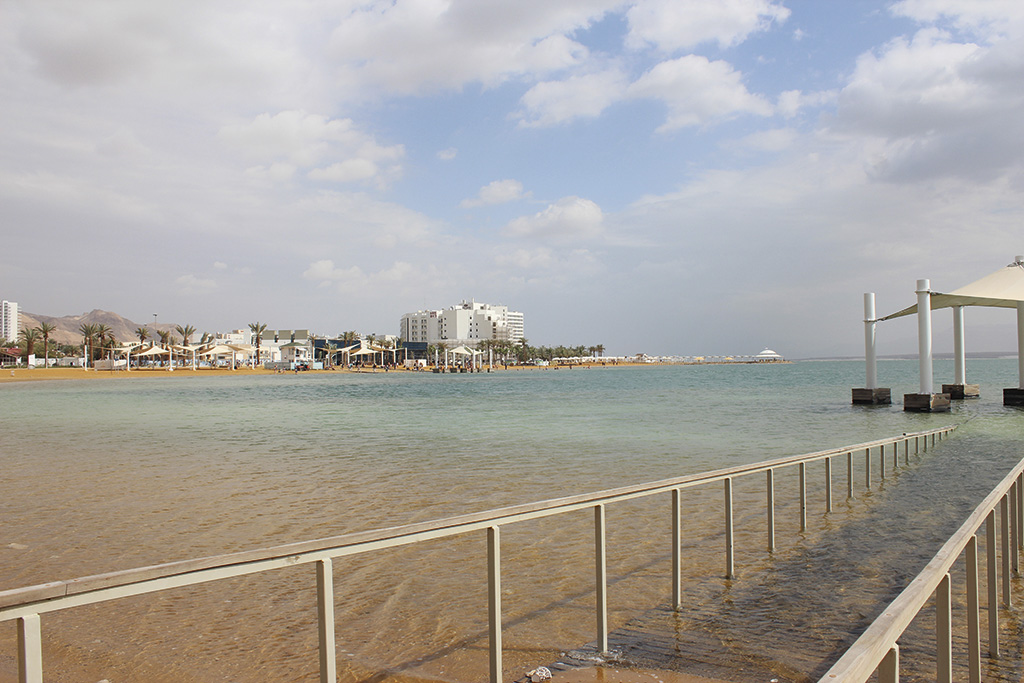
The silky waters of the Dead Sea are surrounded by beaches with plenty of amenities for visitors.
Designer One Bedroom Vacation House, Eilat, is neat and five minutes’ walk from the beach.
From R394 per person sharing. airbnb.com
Jordan Valley Vacation Apartment in rural Menahemia is comfortable and within walking distance to the River Jordan.
From R573 per person sharing. airbnb.com
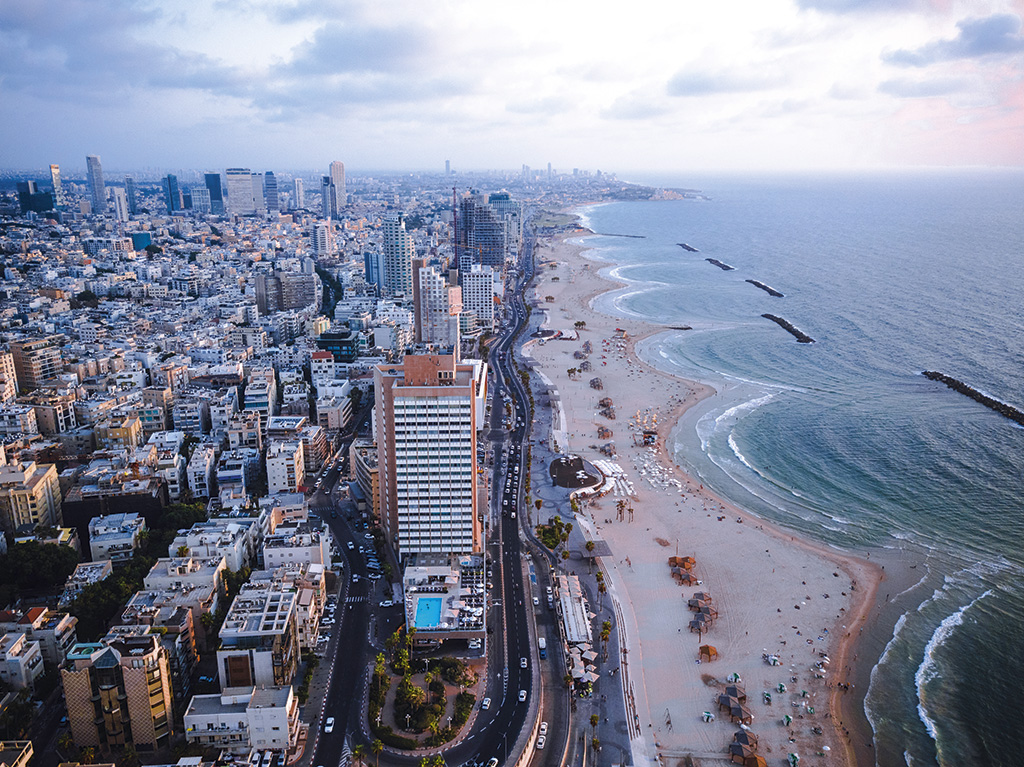
Tel Aviv has 14 kilometres of walking and biking paths along the Mediterranean sea. It winds from the Tel Aviv Marina, through Jaffa and beyond.
The Best of Tel Aviv
Hire a bike or a scooter or just use your feet to explore Rothschild Boulevard by day or night. Visit Florentin for the street art and Jaffa for bargain and high-end market shopping, and the enormous Halper’s Bookstore for second-hand books. Meshek Barzilay in Ahad Ha’am Street is a top-notch vegan experience. Even meat-eaters will be happy! Try Tal Bagels on Carlebach Street for the best bagels you’ll ever eat. Miznon in Ibn Gabirol Street makes Israeli street food using the freshest ingredients. Mimi in Hod Hasharon Jabotinski Street is a buzzy cafe and bakery, also serving salads and sandwiches (I went for the pastries). Hang out here to people watch.

Words and images: Karin Schimke









